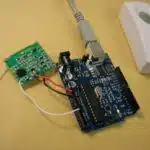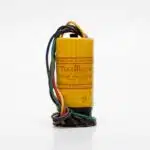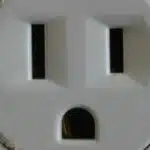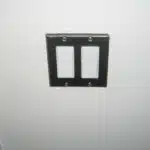Installing a doorbell is a simple and rewarding home improvement project that can be completed in just a few hours. Not only does it add convenience to your daily routine, but it also enhances the safety and security of your home by alerting you to visitors at the door. If you have never installed a doorbell before, don’t worry – with the right tools and guidance, you can easily complete this task yourself.
Before beginning any home improvement project, it is important to gather the necessary tools and materials. For installing a doorbell, you will need a screwdriver, wire stripper, voltage tester, drill, screws, and of course, the doorbell kit itself. It is also important to read through the manufacturer’s instructions carefully before starting the installation process. With these preparations in mind, let’s dive into how to install a doorbell step-by-step.
Preparing For Installation
Before installing a doorbell, it’s important to properly prepare the area where you want to install it. The first step is to measure the space where you plan to place the doorbell. Make sure you have enough room for both the button and the chime box. If you’re replacing an old doorbell, measure the existing hole to ensure that your new doorbell will fit properly.
Once you’ve measured your space, it’s time to choose the location for your new doorbell. The best location for a doorbell is near your front or back entrance, where visitors can easily find it. You should also consider the height of your doorbell button – make sure it’s at a comfortable height for most people to reach.
Keep in mind that if you are installing a wireless or battery-operated doorbell, you may have more flexibility when choosing your location since they don’t require any wiring. However, if you’re installing a wired doorbell, be sure to choose a location near an electrical outlet so that you can power your chime box. With these steps completed, let’s move on to choosing the right doorbell kit that suits your needs for installation.
Choosing The Right Doorbell Kit
It’s ironic how such a small device can make a big difference in your home’s security and convenience. Yes, we’re talking about doorbells. But not just any doorbell will do the job; you need to choose the right doorbell kit for your home. Doorbell kits come with different features, benefits, and drawbacks that you should consider before making a purchase.
One of the first decisions you’ll have to make is whether to go for a wireless or wired doorbell kit. Wireless doorbells are easier to install and offer more flexibility since they don’t require any wiring. They also come in various designs and styles that can match your home’s decor. However, they may suffer from connectivity issues, especially if there are thick walls or other electronic devices interfering with the signal. Wired doorbells, on the other hand, provide reliable performance and don’t require battery replacements. However, they need professional installation and may limit your placement options.
When choosing a doorbell kit, look for features that suit your needs. For instance, some kits have adjustable volume settings that allow you to adjust the chime’s loudness according to your preference or hearing ability. Others come with multiple chimes or tones that you can switch between depending on who is at the door or your mood at the time. Some high-end models even have video cameras that let you see who is ringing without opening the door.
Now that you’ve chosen the right doorbell kit for your home, it’s time to think about safety measures when installing it. Before getting started with any installation process, always turn off power sources in case of electrical shocks or fires. In homes where electricity isn’t labeled clearly on breaker boxes, use a circuit tester to determine which switch controls power to the area where you’ll be working.
Turning Off The Power
After carefully selecting the right doorbell kit, it’s time to prepare for installation. Before anything else, it is important to turn off the power supply to avoid electrocution or any other electrical accidents. To safely turn off the power, locate your home’s circuit breaker and look for the switch that controls the power in the area where you will be working. Once you’ve found it, flip it to the “off” position.
To ensure safety during this process, make sure you have all the necessary tools needed for turning off the power. These may include a voltage tester or a multimeter that can check for live wires. If you are unsure about handling electrical work, consider hiring a licensed electrician to do this step for you.
Turning off the power is crucial in keeping yourself safe during doorbell installation. By following these steps and taking extra precautions while working with electricity, you can avoid any potential hazards and move on to removing your old doorbell in preparation for installing your new one.
Removing The Old Doorbell
As we move forward in our doorbell installation process, it is important to remove the old doorbell before installing a new one. Before we begin, let us paint a picture of what this step entails. Imagine an old and worn-out doorbell hanging on your front porch. The screws holding it in place are rusted and weathered from years of use. The wires connecting it to your home’s electrical system are frayed and exposed.
To remove the old doorbell, you will need a few tools: a screwdriver, pliers, and possibly wire cutters. First, locate the screws holding the doorbell to the wall or frame of your home. Using a screwdriver, carefully remove each screw until the doorbell is free from its mounting location. Be sure to keep track of these screws so that they can be reused later.
Next, disconnect any wires that are attached to the back of the old doorbell. This may require using pliers or wire cutters to remove any binding or connectors holding them in place. It is crucial that you know which wires correspond with each other as they will need to be reconnected when installing the new doorbell. To help keep track of this information, refer to the table below:
| Wire Color | Function |
|---|---|
| Yellow | Transformer |
| Red | Front Door Button |
| Green | Rear Door Button |
| White or Blue (sometimes black) | Common |
With these steps completed, you have successfully removed your old doorbell and are ready for the next phase – testing the wires before installing your new device.
Testing The Wires
Checking the voltage is an essential step in testing the wires of your doorbell. Voltage testers are readily available in hardware stores and can be purchased at an affordable price. To test the voltage, turn off the power supply to the doorbell chime by switching off the circuit breaker. Connect one end of the tester to the wire and the other end to a ground source such as a metal box or bare copper wire. If there is no voltage, then it means that your wiring system has an issue.
If you encounter any problems, troubleshooting issues will help you identify and solve them effectively. For instance, if there is no power supply to your doorbell chime, check if the transformer is functioning correctly. Also, ensure that all connections between wires are secure and tight because loose connections may lead to low voltage output or even no sound at all from your doorbell chime.
To troubleshoot further, you can use a multimeter to check if there is continuity between different wire ends. Additionally, ensure that all wires are connected correctly according to their respective color codes; this will prevent any issues with polarity later on when installing the doorbell transformer. Once you have solved any issues with wiring and testing for voltage, proceed to install the transformer as explained in our next section below.
Moving on from testing for voltage and troubleshooting potential issues will enable us to move onto installing the transformer.
Installing The Transformer
As we continue with the installation process, it’s important to ensure that all wires are properly tested before moving forward. By doing so, you can guarantee that your doorbell will function as intended and avoid any potential hazards. In this section, we will cover wiring instructions and transformer options.
When it comes to wiring instructions, it’s important to follow the manufacturer’s guidelines closely. Typically, you’ll need to connect the two wires from the doorbell button to the two screws on the transformer. From there, you’ll take two new wires and connect them to the other screws on the transformer. These wires will then be routed through your walls and connected to your doorbell chime.
Now that you have a basic understanding of wiring instructions, let’s talk about transformer options. There are a few different types of transformers available – plug-in, wired, or wireless – each with its own set of advantages and disadvantages. Ultimately, your choice will depend on your specific needs and preferences.
As we move onto routing the wires in our next section, remember that proper installation is crucial for both functionality and safety. Be sure to carefully follow all instructions and consider consulting a professional if necessary for assistance in completing this project successfully.
Routing The Wires
- In order to install a doorbell, the first step is to identify the wires and determine which wire is the power source.
- Next, the wires must be connected in the correct order.
- Depending on the type of doorbell, the wires may need to be connected to the transformer, chime, and/or button.
- Lastly, the connections should be tested to ensure that the doorbell is functioning properly.
Identifying Wires
When it comes to installing a doorbell, one of the most crucial steps is routing the wires. Identifying wires is an important aspect of this process and requires some fundamental knowledge of wire stripping techniques and color coding. As a home improvement expert, I would like to share some valuable tips on how to identify the wires for your doorbell installation.
The first thing you need to do is check the wiring in your home. Most homes have either two or three wires, usually red, white, and green. The red wire is positive, while the white wire is negative. The green wire is typically used as a grounding wire. In case there are more than three wires or they have different colors, it’s best to consult an electrician before proceeding.
Next, you need to strip the ends of the wires properly using a wire stripper. This tool helps you remove the insulation from the ends of the wires without damaging them. Once done, use electrical tape to cover any exposed metal parts of the wire that could potentially cause short circuits. Remember always to follow safety guidelines when working with electricity.
In conclusion, identifying wires is an essential step in routing them for your doorbell installation project. Color coding and proper wire stripping techniques are crucial for ensuring that your doorbell works correctly and safely without causing any electrical hazards. With these tips in mind, you can confidently proceed with your doorbell installation project and enjoy its benefits for years to come!
Connecting Wires
After successfully identifying the wires for your doorbell installation, the next crucial step is connecting them properly. This process requires accurate wire stripping techniques to expose the metal parts of the wires and prepare them for connection. It’s important to note that there are different types of doorbell wires, and each may require a specific approach when connecting them.
To start connecting the wires, twist the ends of each wire together based on their color code. For example, connect the red wire to the positive terminal of your doorbell transformer or chime box and connect the white wire to the negative terminal. If you have a third green grounding wire, attach it to a nearby grounding point. After completing these connections, wrap electrical tape around each wire joint to ensure they stay securely connected.
It’s essential to follow safety guidelines when connecting wires as any wrong move can lead to electrical hazards such as short circuits. Ensure that all your connections are secure before turning on power to test your doorbell’s functionality. With these tips in mind, you can confidently connect your doorbell wires and enjoy its benefits without risking electrical hazards or malfunctions.
Mounting The Doorbell Button
The next step in installing a doorbell is to mount the doorbell button. This is an important step as it determines the location where visitors will press to announce their presence. The first consideration when mounting the button is to select a location that is easily accessible and visible from the outside.
Wiring techniques should also be taken into account when selecting a location for the button. The button should be mounted in an area where wiring can easily be routed through walls and ceilings without interfering with other electrical systems. It’s important to note that the button should not be placed near any metal objects or other electronic devices, as this may interfere with its signal transmission.
Once you have selected the ideal location for your doorbell button, it’s time to install it. This can typically be done using screws or adhesive backing provided by the manufacturer. Once installed, make sure to test it out before moving on to connecting the wires. In the next section, we will discuss how to properly connect the wires to ensure your doorbell functions correctly.
Connecting The Wires
Identifying the wires for a doorbell installation requires first locating the transformer, chime, and push button. Connecting the wires involves connecting the wires from the transformer to the chime and the push button to the chime. It is important to ensure that the correct wires are attached and that the connection is secure. Testing the connection is done by pressing the doorbell button to ensure that the chime sounds. If the chime does not sound, the connection may need to be adjusted. Additionally, it is important to check the voltage of the transformer to ensure it is compatible with the doorbell. Finally, it is important to review all wiring connections to ensure they are secure.
Identifying The Wires
When it comes to connecting the wires of a doorbell, identifying the wires is a crucial step that should not be overlooked. This subtopic involves checking polarity and wire termination techniques to ensure a proper connection. Checking polarity involves determining which wire is positive and which one is negative. This can be done using a multimeter or by visually inspecting the wires for markings.
After identifying the polarity of the wires, you can proceed with terminating them. One common technique is stripping the ends of the wires and twisting them together before securing them with wire nuts. Another option is using crimp connectors, which require a crimp tool to secure the wires in place. It’s important to make sure that all connections are tight and secure to prevent any electrical hazards.
In summary, identifying the wires when connecting a doorbell involves checking polarity and choosing appropriate wire termination techniques. By taking these steps, you can ensure that your doorbell functions properly and safely. Remember to always follow manufacturer instructions and safety guidelines when working with electrical wiring.
Connecting The Wires
Connecting the wires of a doorbell is an essential step in ensuring that it functions properly. It requires careful attention to detail, as not following the correct techniques may lead to electrical hazards. In this section, we will discuss wire stripping techniques and wiring diagrams for doorbells.
Before connecting the wires, make sure to study the wiring diagram provided by the manufacturer carefully. This diagram will show you which wires go where and how they are connected. Once you have done that, it’s time to strip the ends of the wires carefully. You can use a wire stripper or a pair of scissors to do this. Be sure not to cut too deep into the wire when stripping it because this may damage it.
After stripping the ends of the wires, twist them together tightly and secure them with wire nuts or crimp connectors. Wire nuts are easy to use; all you have to do is insert both ends of each stripped wire into a nut and twist them clockwise until they’re tightly secured. Crimp connectors require more effort but provide an even more secure connection. To use crimp connectors, insert each stripped wire into its respective connector and crimp it using a crimping tool.
In summary, connecting the wires of a doorbell involves studying wiring diagrams provided by manufacturers, stripping the ends of wires carefully, twisting them together firmly before securing them with either wire nuts or crimp connectors using a crimping tool. By following these steps correctly, you can ensure that your doorbell functions safely and efficiently.
Testing The Connection
Now that we have discussed the proper techniques for connecting the wires of a doorbell, we must also ensure that the connection is working correctly. Testing the connection is an essential step in troubleshooting any issues with the doorbell’s functionality. This subtopic will discuss how to test the connection and provide some troubleshooting tips for common mistakes.
To test the connection, you can use a multimeter to measure the voltage across each wire. Place one probe on one wire and another probe on another wire to see if there is a voltage reading. If you do not get a voltage reading, then there may be an issue with the wiring or transformer. Another way to test the connection is by pushing the doorbell button and seeing if it activates the chime. If it does not, then there may be an issue with either the wiring or chime itself.
If you encounter any problems during testing, some troubleshooting tips can help resolve them. One common mistake people make when connecting wires is reversing them. Double-checking which wires go where according to the manufacturer’s wiring diagram can prevent this from happening. Another common mistake is cutting too deep into the wire while stripping it, which can damage it and cause electrical hazards. Ensuring that each wire has been stripped correctly can prevent this issue from occurring. By following these testing steps and troubleshooting tips, you can ensure that your doorbell functions safely and efficiently without any issues or hazards in your home improvement project.
Attaching The Doorbell Chime
Once you have wired your doorbell, it’s time to attach the chime. The chime is responsible for producing a sound when someone presses the doorbell button. Before attaching the chime, ensure that it is compatible with your doorbell transformer voltage. You can usually find this information on the packaging or in the manufacturer’s instructions.
To attach the chime, locate a suitable location near your entryway where you can mount it securely. Most chimes come with mounting brackets and screws that you can use for installation. Once you have mounted it, connect the wires from your doorbell transformer to the terminals on your chime. Ensure that there is a secure connection and that there are no loose wires.
Doorbell chime maintenance is essential to ensure that your system works correctly at all times. Periodically check for loose connections or wires, as well as any signs of damage or wear and tear. Troubleshooting chime issues may involve checking if there is power going to the transformer or if there are any blown fuses. If you encounter any problems with your doorbell system, refer to the manufacturer’s instructions or seek help from a professional electrician.
As you proceed with testing your system, keep in mind that even small adjustments can make a significant difference in how well everything functions together. Be patient and don’t be afraid to ask for assistance if needed. By following these steps and conducting routine maintenance checks, you can keep your doorbell system working efficiently and effectively for years to come.
Testing The System
With the doorbell chime attached, it’s time to test the system. Did you know that according to a recent survey, almost 70% of homeowners experience troubles with their doorbells? Testing your doorbell after installation is crucial to ensure that it’s working correctly and avoid any future issues.
To test your doorbell, follow these testing techniques:
- Press the doorbell button and listen for a chime sound. If you hear nothing, check the chime connections.
- Check the transformer voltage. Use a multimeter to measure the voltage output of the transformer. The ideal reading should be between 16V-24V AC.
- Inspect wiring connections. Verify that all wires are securely connected and free from any damage.
If your doorbell still isn’t working correctly, try these troubleshooting tips:
- Replace dead batteries in wireless doorbells.
- Adjust the strike plate on mechanical doorbells if they fail to ring.
- Check for interference from nearby devices like Wi-Fi routers or other electronics.
Once you’ve successfully tested and troubleshooted your doorbell system, it’s time to secure all components in place.
Securing The Doorbell Components
Now that you have installed the doorbell, it is important to make sure that all the components are secure. One thing to consider is cable management. Make sure that all cables are tucked away neatly and securely, as loose cables can be a safety hazard and may even prevent the doorbell from functioning properly. You can use cable ties or clips to keep the cables in place and prevent them from tangling.
Another important aspect of securing your doorbell components is weatherproofing. Outdoor doorbells are exposed to harsh weather conditions such as rain, snow, and extreme temperatures, which can damage them over time. Therefore, it is crucial to ensure that your doorbell is properly protected from the elements. You can do this by installing a weatherproof cover over the doorbell unit or using waterproof sealant around any gaps where wires enter your home.
By taking these steps to secure your doorbell components through proper cable management and weatherproofing, you will help ensure that your new doorbell system works efficiently and lasts longer.
To troubleshoot common issues with your newly installed doorbell system, there are a few things you should keep in mind. First, check if all connections are made correctly and securely. Any loose or disconnected wires could cause problems with your system’s functionality. Additionally, make sure that your chime unit is set up correctly according to manufacturer instructions. If your doorbell still isn’t working as intended after checking these things, consult a professional for further assistance in resolving any issues.
Troubleshooting Common Issues
As with any electronic device, doorbells can experience issues that may prevent them from functioning properly. Troubleshooting doorbell sounds is one common problem that homeowners may encounter. If the doorbell doesn’t ring when pressed, it could be due to a faulty button or chime unit. Check for loose wires or connections and ensure that they are securely fastened.
Another issue that can arise with doorbells is fixing power problems. If the doorbell doesn’t ring at all, it could be due to a lack of power. Check the circuit breaker to make sure that it hasn’t tripped and reset it if necessary. Additionally, check the transformer to ensure that it is providing adequate power to the doorbell.
Overall, troubleshooting common issues with your doorbell can save you time and money in the long run. By being proactive and addressing any issues as soon as they arise, you can ensure that your doorbell functions properly for years to come. In the next section, we will discuss some basic maintenance tips to keep your doorbell in top working condition.
Maintaining Your Doorbell
After successfully troubleshooting any issues with your doorbell, it is important to focus on maintaining its functionality. One key aspect of this is cleaning the contacts. Over time, dust and debris can accumulate on these small metal pieces, which can interfere with the electrical connection between the doorbell button and chime. To clean them, simply use a soft cloth or cotton swab dipped in rubbing alcohol to gently wipe away any dirt or buildup.
Another important aspect of doorbell maintenance is checking voltage levels. A lack of power can cause a doorbell to stop working altogether or produce weak and inconsistent sounds. To check voltage levels, you will need a multimeter, which can be purchased at most hardware stores for a relatively low cost. Use the multimeter to test the voltage coming from your transformer and compare it to the manufacturer’s recommended level for your particular doorbell model.
By taking these simple steps to maintain your doorbell, you can ensure that it continues to function properly for years to come. With proper care and attention given regularly, you’ll avoid having to troubleshoot major problems down the line and ultimately enjoy your new doorbell in peace knowing that it’s always ready when guests arrive!
Enjoying Your New Doorbell
Now that you have successfully installed your new doorbell, it is time to enjoy its benefits. Your doorbell can now alert you of visitors and deliveries, making your life more convenient and secure. However, there are a few ways to maximize the sound of your doorbell and customize its appearance to fit your personal style.
Firstly, if you find that the sound of your doorbell is not loud enough or cannot be heard from certain areas of your home, consider adding an additional chime or bell. This will help ensure that you never miss a visitor or delivery again. Additionally, you can adjust the volume of your doorbell by locating the volume control switch on either the transmitter or receiver and adjusting it accordingly.
Secondly, if you want to customize the appearance of your doorbell, there are several options available. You can choose a different color or finish for the chime cover or add decorative elements such as a brass nameplate. Some companies even offer customizable covers with designs ranging from classic to modern.
Lastly, remember that regular maintenance is important for keeping your doorbell functioning properly and maximizing its lifespan. Check all connections periodically to ensure they are secure and free from corrosion. Replace batteries in wireless transmitters as needed and clean any dirt or debris from the chime cover.
By following these tips for maximizing sound and customizing appearance while maintaining proper maintenance procedures, you can enjoy your new doorbell for years to come without any issues.
Conclusion
Installing a doorbell may seem like a daunting task, but with the right tools and knowledge, it can be a simple process. Before beginning the installation process, ensure that you have the correct doorbell kit selected and have turned off the power to avoid any dangerous electrical shocks.
After removing the old doorbell and testing the wires, secure the new components in place before troubleshooting any potential issues. Finally, maintain your doorbell to ensure its longevity and enjoy the convenience of a functioning doorbell.
As a home improvement expert, I encourage homeowners to take on DIY projects such as installing a doorbell. Not only does it save money, but it also provides a sense of accomplishment in completing a project on your own. Remember to always prioritize safety and follow instructions carefully for a successful installation. In conclusion, with patience and attention to detail, anyone can install their own doorbell and enhance their home’s functionality. As they say, “a little elbow grease goes a long way.”
Image Credits
- “Doorbell, repurposed” by Roo Reynolds (featured)























![How To Replace A Single-Pole Wall Switch 23 '... All in all it's just another [switch] in the wall.' ...](https://green-life.blog/wp-content/uploads/2023/05/17xmP5qMtVjq-150x150.jpg.webp)





